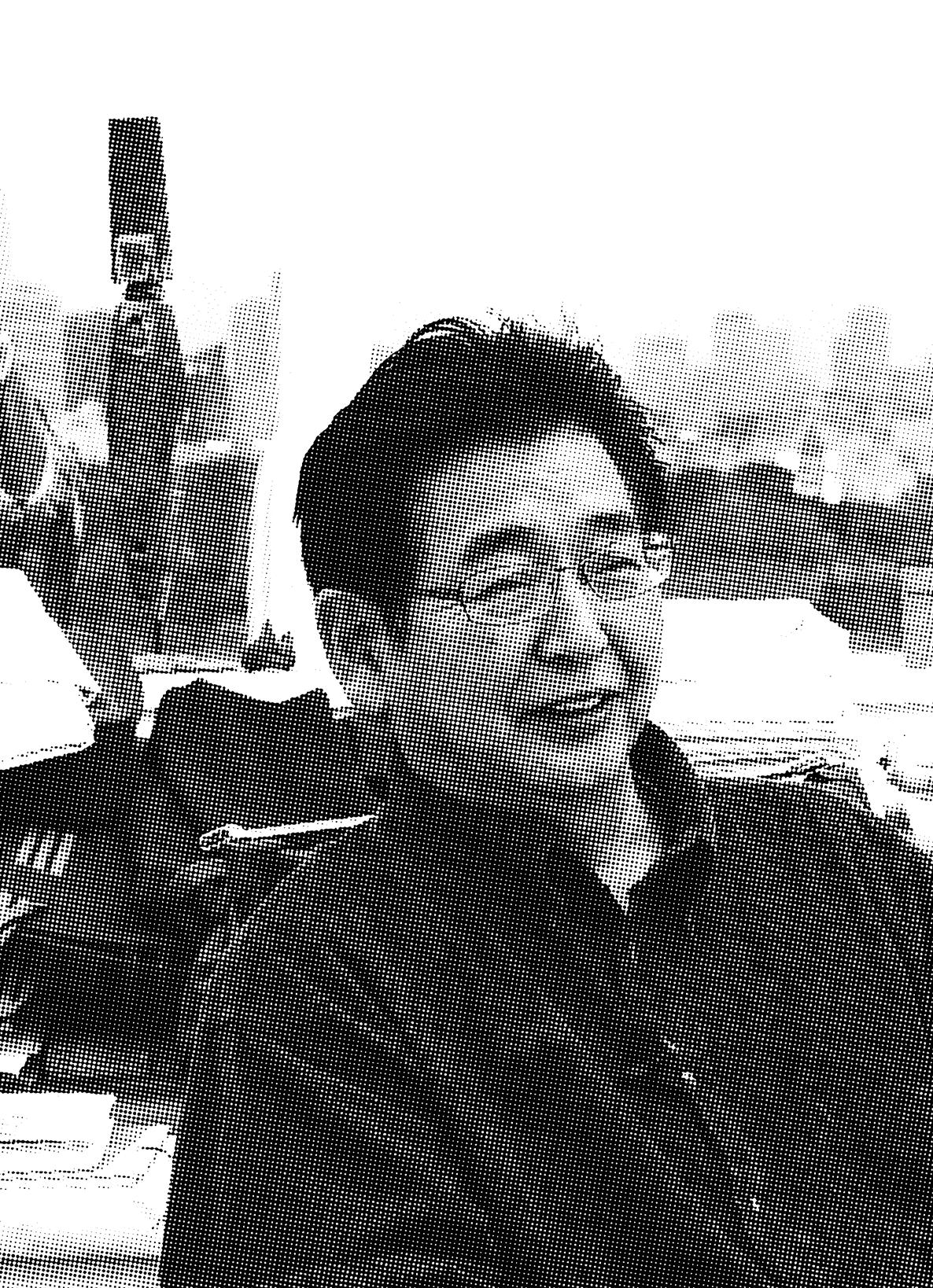
3 minute read
Haruko Kumakura
熊倉晴子

b. 1983, Assistant Curator Mori Art Museum, Lives and works in Tokyo, Japan
Interview conducted in Japanese
熊倉晴子インタビュー 2019 年 11月29日

1983 年東京都生まれ、同地在住。 森美術館アシスタントキュレーター
インタビューは日本語で行われました

HK: It was difficult at first to pull many people together, organize information, and exchange opinions, pulling in one direction. It’s still difficult, but I’ve gradually learned how to do it.
JH: What are some of the difficult issues facing artist and curators Today? (Perhaps especially in Relation to the context of Australia/Asia Pacific & Japan)
HK: I think the economic difficulty is great. I don’t think it’s limited to contemporary artists.
JH: Hans Ulrich Obrist says, ‘Curating always follows art; it’s not the other way around’. Yet the practice of the curator as it is finally beginning to be popularly understood extends beyond the Latin etymology of cura (care) into a constellation of different actions: Do you feel that exhibitions are often a collaboration between the artists and the curators?
HK: I think there are cases like that, but I don’t think it is every time.
JH: What do you think about the strategies of artist curating and developing their own exhibitions and programs? What is it that makes the curators role/work and artists role different?
HK: Artists can be curators, and curators maybe an artist. It’s hard to answer because I don’t think what’s changing is always the same. However, in any case, I feel that it is more important to ‘do’, rather than the title and position, so I don’t think that the role is always important.
JH: Art institutions can go from being both: a site of criticism: to a site for organizing new social activities and conceptual experiences. What are some of the things (art) institutions are doing to make connections between audiences, artists and society?
HK: I think the practice of the learning team is an attempt to connect audiences, artists, and society. I thought it would be important for the curatorial and learning to work together, and I thought it was interesting, so I performed performances and walks with Agatha Gothe-Snape. I would like to continue this in the future.
JH: How can an institution address the dichotomy between art as cultural entertainment and art as political inquiry? 熊倉 晴子: 多くの人をまとめ、情報を整理し、 意見を交換し合いながら、ひとつの方向へ引っ張っ ていくのが、最初は困難でした。今も難しいですが、 どのようにすれば良いかが少しずつ分かってきまし た。
ホーガン・ジェシー: 現在、アーティストや キュレーターは、どのような問題に直面して いますか?
熊倉 晴子: 経済的な困難は大きいと思います。 現代のアーティストに限ったことではないと思いま すが。
ホーガン・ジェシー: 展覧会はアーティス トとキュレーターのコラボレーションである ことが多いと思いますか?
熊倉 晴子: そういうケースもあると思います が、毎回ではないと思います。
ホーガン・ジェシー: アーティスト自身によ るキュレーションや展覧会、プログラム開発 の戦略についてどう思いますか? キュレー ターの役割や作品が、アーティストの役割と の一線を画すものは何ですか?
熊倉 晴子: アーティストもキュレーターになれ ますし、キュレーターもアーティストになれるかも しれません。役割の一線を画すものはいつも同じで はないと思うので、答えるのは難しいです。しかし、 いずれにせよ、どのようなタイトルや役職であるか ということよりも、何をやるのかが重要な気がする ので、いつも役割(の名前)が重要であるとは考え ていません。
ホーガン・ジェシー: 美術機関は、批判の 場と、新しい社会活動や概念的経験をまと める場のどちらにもなり得ると思います。オ ーディエンスやアーティスト、社会の間でこ れらの繋がりを作るために、美術機関は何 をしていますか?
熊倉 晴子: ラーニングチームの実践は、オーデ ィエンスやアーティスト、社会を繋ぐための試みだ と思います。キュレトリアルとラーニングがより協 働してゆくことが重要だと思いましたし、面白いと 思ったので、アガサと一緒にパフォーマンスやウォ ークなどを実施しました。今後もさらに継続して実 施していきたいと思っています。
ホーガン・ジェシー: 文化的娯楽としての アートと政治的探求としてのアートとの間の 二面性に、どのようにして機関は対処できる のでしょうか。また、これを仲介するキュレ ーターの役割は何ですか?この役割は、アー ティストの役割とはどう違いますか?
HK: It’s a difficult question, and I’m not sure if I understand it or not, but the Mori Art Museum is a facility with an emphasis on the cultural entertainment of art. I want to make it happen. Institutions and facilities have their roles and purposes, and it is not easy to change, but we, including curators, make good use of their existence to implement projects and exhibitions that are meaningful to both sides. I think is possible. The artist thinks where the exhibition is important to the work, and may not be so important, and there are various ideas, so it cannot be generalized here. It’s just my feeling.
JH: Cultural re-appropriation is a two way street. It flows in both directions. Since modernism and modernization in Japan— Japanese Modern & Contemporary art has functioned with and without reference, connection and relation to the formulas, structure, aesthetics, style, and concepts of western International (global) art. From your perspective could you describe some of the unique approaches Japanese artists have developed to contemporary art? Or/Could you describe some of the unique approaches to contemporary art in Japan?
HK: It’s not an easy question to answer.
JH: In your own perspective how would you define ‘Survival’ or the definition of ‘Surviving’ for contemporary artists? How do you think artists will survive to create their artistic legacy in the world and Art History, from now and into the future?
HK: I think I will survive. It may not be easy.
(Translated Text) 熊倉 晴子: 難しい質問ですね。理解できている か少し自信がないですが、森美術館は美術の文化 的娯楽に重点を置く性格の施設です。だからこそ可 能な政治的芸術の探求というものが確かにあって、 それを実現したいと思っています。機関、施設には その役割や目的があり、それは簡単には変わりませ んが、キュレーターを始めとする我々が、その存在 をうまく利用して、双方にとって意味のあるプロジ ェクトや展覧会などを実施するのは可能だと思っ ています。展示をする場所がアーティストの作品に とって重要な場合もあるし、そう重要でない場合も あると思うし、いろんな考えがあると思うので、ここ で一般化することはできません。あくまで私の実感 というところです。
ホーガン・ジェシー: 文化の再流用は双方 向に流れています。日本におけるモダニズム とポストモダニズムにおいて、日本の近現代 美術は、西洋の国際的な芸術の公式(構造) 、美学(スタイル)とコンセプト(アイデア)の 参照、接続、関連の有無に関わらず、機能し てきました。熊倉さんの観点から、日本のア ーティストが現代美術において発展させた 独自のアプローチについて教えてください。 または日本の現代美術に対するユニークな 取り組みについてお話しください。
熊倉 晴子: 簡単に答えられる質問ではないです ね。
ホーガン・ジェシー: 熊倉さん自身の観点 で、現代のアーティストの「生き残り」や「生 存」をどのように定義しますか?これから先 アーティストたちは生き残るでしょうか?( 芸術的遺産と芸術史を考慮してください)
熊倉 晴子: 生き残ると思います。簡単ではない かもしれないですけど。











